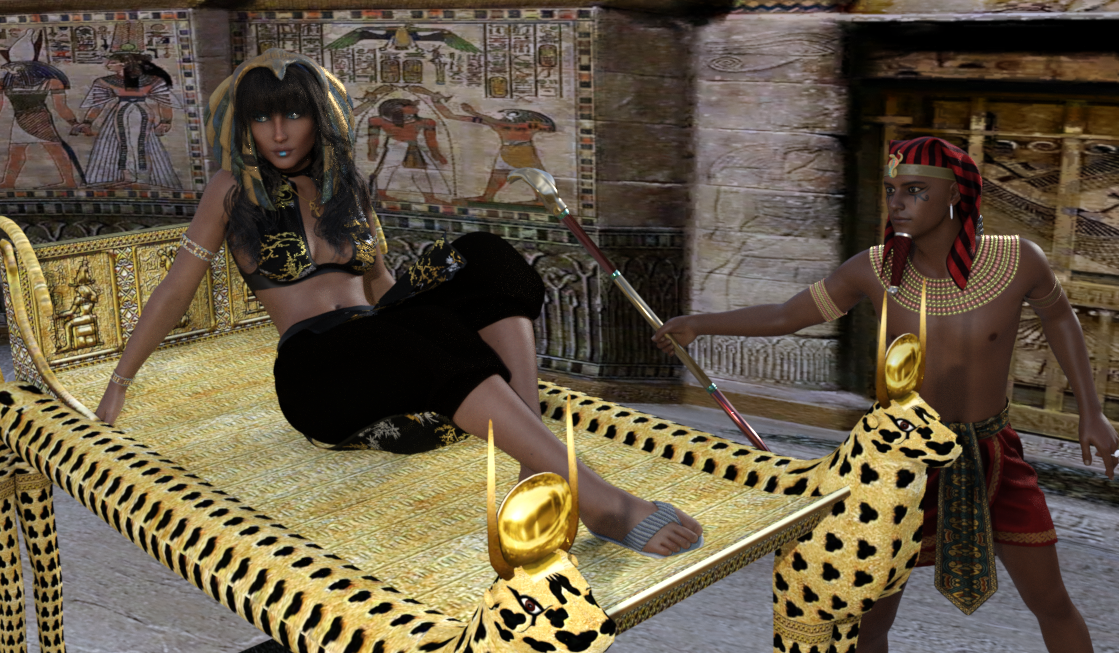
Queen Ankhesenamun who was the third daughter of Akhenaton and Nefertiti, was only thirteen years old when she married King Tutankhamun and he was only eight years old. About 3 years on the throne the royal couple changed their names from Tutankhaten and Ankhesenpaaten to Tutankhamen and Ankhesenamen. After Pharaoh Akhetaten died, the royal couple moved back to their palaces in Thebes and Memphis.
Why the Royal Couple Changed Their Name
During the reign of Pharaoh Akhenaten, Tutankhaten and his beautiful bride, Ankhesenpaaten, ascended to the throne of Egypt. They were young and full of promise, and the people of Egypt had great hopes for their reign.
However, as they began their rule, they found themselves faced with a difficult decision. Pharaoh Akhenaten had introduced a new religion to Egypt, one that worshipped the sun god, Aten, above all others. And as the new rulers of Egypt, Tutankhaten and Ankhesenpaaten were expected to uphold this religion and follow in the footsteps of their predecessor.
But as they looked out over their kingdom, they saw a people who were confused and divided. Many still clung to the old gods of Egypt, and they longed for a return to the traditional ways of worship.
And so, Tutankhaten and Ankhesenpaaten made a bold decision. They decided to break with tradition and reject the religion of Aten. Instead, they chose to honor the old gods of Egypt, and to restore the temples and shrines that had been neglected under Pharaoh Akhenaten's rule.
To mark this change, they also decided to change their names. Tutankhaten became Tutankhamen, which means "the living image of Amun," the god of creation and fertility. Ankhesenpaaten became Ankhesenamen, which means "she who lives for Amun."
Their new names were a sign of their commitment to the traditional ways of Egypt, and a rejection of the radical changes that had been introduced by Pharaoh Akhenaten. And although their reign was short-lived, their legacy lived on, as their decision to embrace the old gods helped to heal the wounds of a divided nation and ushered in a new era of prosperity and stability for Egypt.

King Tutankhamun was married to Queen Ankhesenpaaton, Pharaoh Akhenaten's third daughter soon after his coronation. Queen Ankhesenamun, a daughter of Nefertiti and Pharaoh Akhenaten was King Tutankhamun's half sister. As all the royals were considered to be living Gods, it was safer to marry inside the family to protect their royalty and Godhood.
Queen Ankhesenpaaton was a powerful queen of ancient Egypt, who played an important role in the reign of her husband, Pharaoh Akhenaten. Born into the royal family, she was raised to be a queen, and she proved herself to be a skilled and capable ruler in her own right.
One of her most notable accomplishments was her work to promote religious tolerance and acceptance in ancient Egypt. As the wife of Akhenaten, who had instituted a radical religious reform that focused on the worship of the sun god Aten, she worked to bridge the gap between the new religion and the traditional polytheistic beliefs of the Egyptian people.
Through her diplomacy and her efforts to foster understanding and cooperation, Queen Ankhesenpaaton was able to bring the different religious factions of Egypt together and help to restore peace and stability to the kingdom.
But her accomplishments went beyond politics and religion. She was also known for her generosity and her charitable works, often donating large sums of money and resources to the less fortunate members of society.
One day, as she was out on a charitable mission, she came across a group of travelers who had been stranded in the desert. They were tired, hungry, and thirsty, and they had no means of getting home.
Queen Ankhesenpaaton immediately took action, providing the travelers with food, water, and shelter. She even arranged for a group of soldiers to escort them safely back to their homes, ensuring that they arrived safely and without incident.
The travelers were so grateful to the queen that they bestowed upon her a special gift: a rare and precious gemstone that was said to bring good luck and prosperity to its owner.
Queen Ankhesenpaaton was deeply touched by the gesture, and she treasured the gemstone for the rest of her life. But she was also grateful for the opportunity to help others, and she continued to devote her time and resources to making the world a better place for all of her subjects.
Her legacy as a powerful queen, a diplomatic leader, and a generous philanthropist continues to be remembered and celebrated in ancient Egypt to this day.

